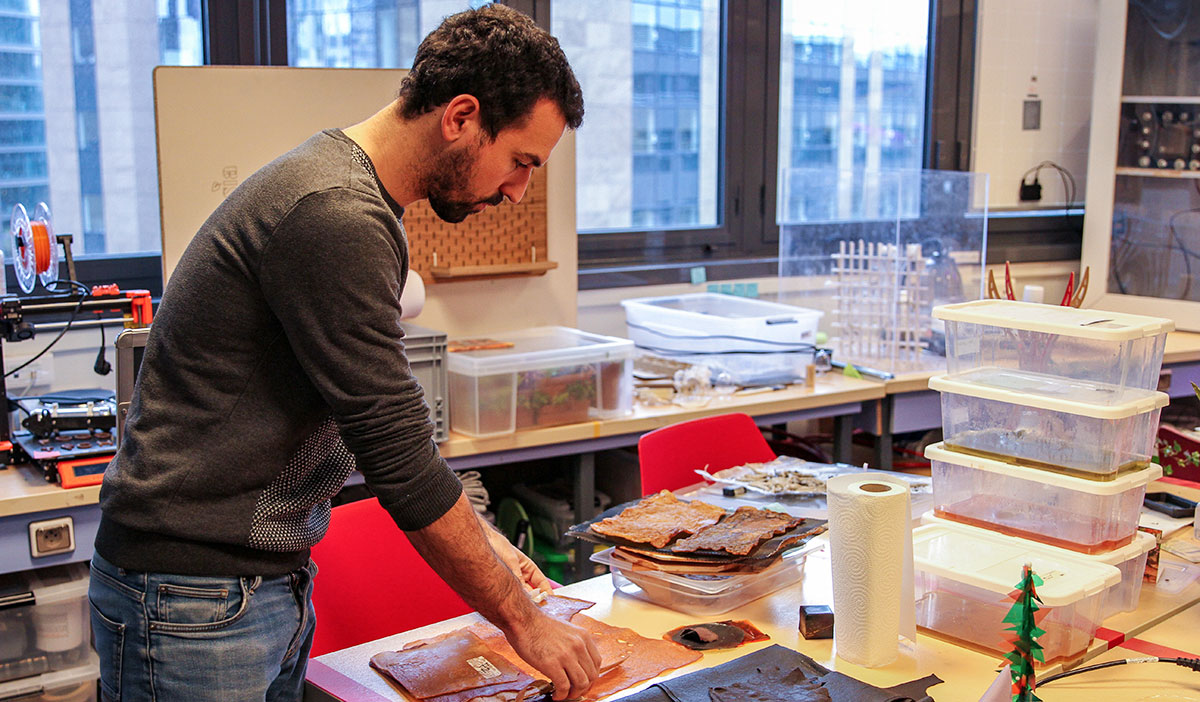Resilient Futures Group Principal Investigator Marc Teyssier spoke with Marwa EIDiwiny on a recent episode of the IEEE RAS Soft Robotics podcast. They discussed soft materials and human-computer interaction and Devinci Innovation Center’s contribution to the robotics community.
Marc Teyssier is a designer, researcher and principal investigator of the Resilient Futures Group at Devinci Innovation Center. With a focus on Design, Sustainability and Low-Tech, Marc Teyssier develops creative hardware and software experiences that bring closer technology to human nature. Among the innovations covered as a part of the Resilient Futures group, is the use of organic soft robotics, through bio-based prototyping, using bio-degradable materials and alternative fabrication techniques.
Listen to the full episode with Marc Teyssier below
Marc Teyssier speaks on “human-like artificial skins sensors”
“I’m always using the human as a starting point in my research. I’m inspired by the human skin, its layers, its viscosity, its mechanical properties, but I also look at animals, and the mechanical impact on the sensing, and then I’m looking only at the mechanical aspects. I’m trying to explore new materials to systematically reproduce the human skin layers’ properties. I look at various silicon materials to create these layers and study ways to put senses in them. So, after dissecting the human body in these different layers, I’m trying to dissect the technology in those different pieces that would allow “feeling” just like human skin.”
Committed to the sustainability of the synergy between art, science and technology, Devinci Innovation Center develops transdisciplinary approaches to research and engineering.
“I think what matters the most is the relevance of the technology we are developing and so, from this perspective, I think that the artistic aspect is more important right now, because the creation of uncanny technologies will get people to question their interaction with technologies and their own desires from technology. From this point of view, an artpiece in a museum can question more the use of technology than a research paper”, says Marc Teyssier.







